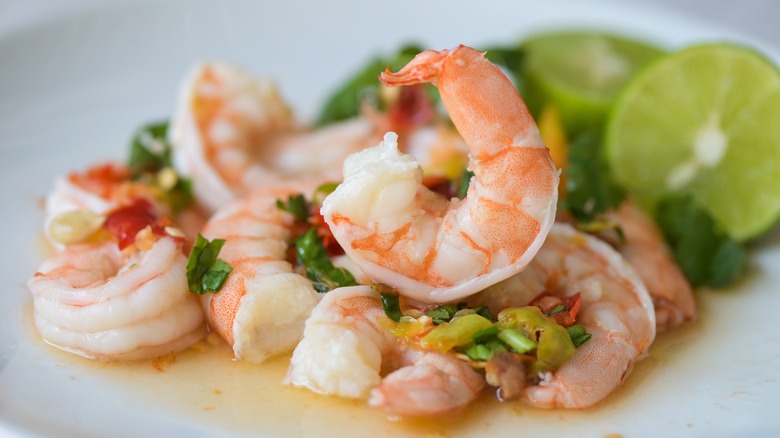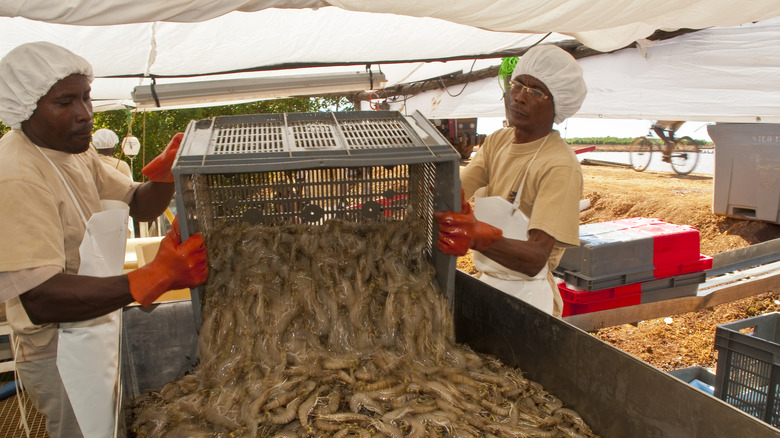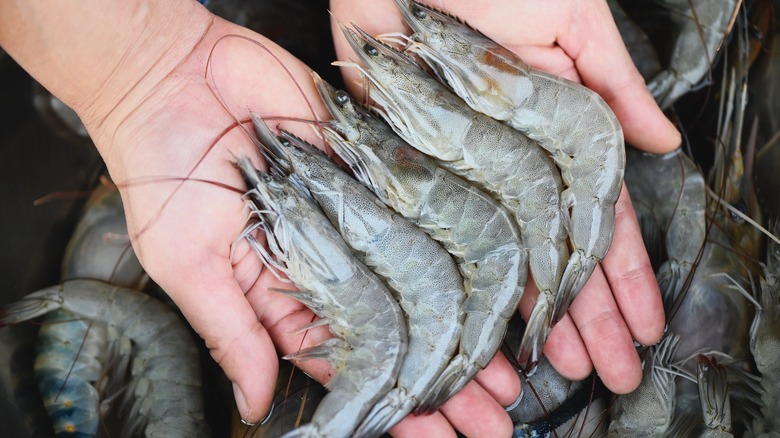The Unsettling Reason You Shouldn't Buy Imported Shrimp
Shrimp has always been a shellfish fan favorite, a cocktail party staple, and a source of protein found in dishes as varied as shrimp scampi and shrimp pad thai. It has long been ranked as one of the most popular seafoods in the U.S., and for good reason. It's quick and easy to cook, and has a mild flavor, meaning it works well with almost any flavor profile.
But these tasty little critters have a big impact on the environment, local economies, and public health, particularly when imported from abroad. Of the shrimp we eat in the U.S., 90% of it comes from other countries, including major exporters like Vietnam, Bangladesh, Thailand, and Guatemala. Since domestic shrimp farming is still catching up to the cheap and abundant options that can be shipped in from abroad, you're most likely eating shrimp that came from far, far away. And the growing demand for shrimp is hurting the planet.
Shrimp's global and local impact
Shrimp is estimated to be ten times as bad for the environment as beef, which is staggering considering the resources required to raise cattle for slaughter. A large segment of shrimp farming in Asia takes place on former mangrove forests, which are cleared to make way for the lucrative shrimp business. Mangroves are crucial for preventing soil erosion and reducing damage to local villages during tsunamis and storms, and they also absorb greenhouse gases like CO2. Getting rid of these intertidal forests can damage the soil and the air, as well as create opportunities for broader community damage.
Shrimp farms also tend to displace locals who fish and forage in these mangrove forests. And if they protest, they could be assaulted or even murdered for attempting to protect their local resources from shrimp farms. There is also a major human trafficking crisis in the shrimp industry, with much of the shrimp in our grocery stores connected to widespread human rights abuses.
Shrimp's health impact
Shrimp that's farmed outside of the U.S. where rules around husbandry might be more lax, can raise the likelihood the animals are subject to contaminants. Large numbers of shrimp are often crammed into small spaces together, where their waste can contaminate the water supply. They could also be infected by runoff from nearby sewage, or quickly spreading diseases among the tightly-packed population.
To avoid disease, these shrimp are often treated with antibiotics, which can be passed along to humans when they are consumed. Many of these antibiotics are illegal for animal treatment in the U.S., as they can contribute to antibiotic resistance, a growing problem in the public health arena. Other dangerous contaminants, like E. coli, MRSA, and salmonella, have also been discovered in imported commercial shrimp products.
There are still relatively limited options for purchasing domestic shrimp, but if you can find shrimp farmed in the U.S. or Canada, it's a safer bet than imported shrimp. Your body and the environment will thank you.



